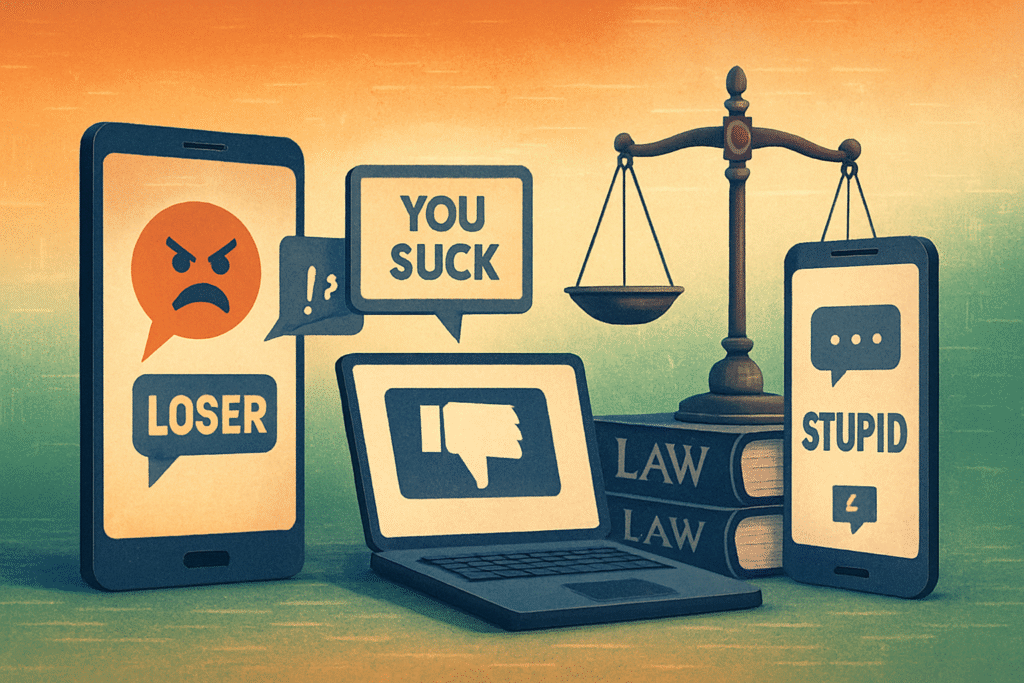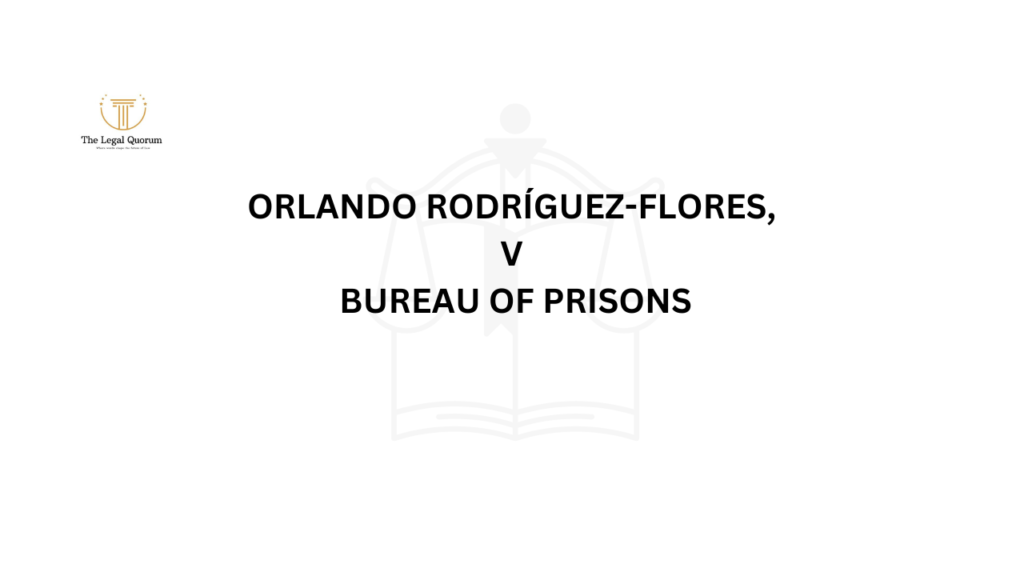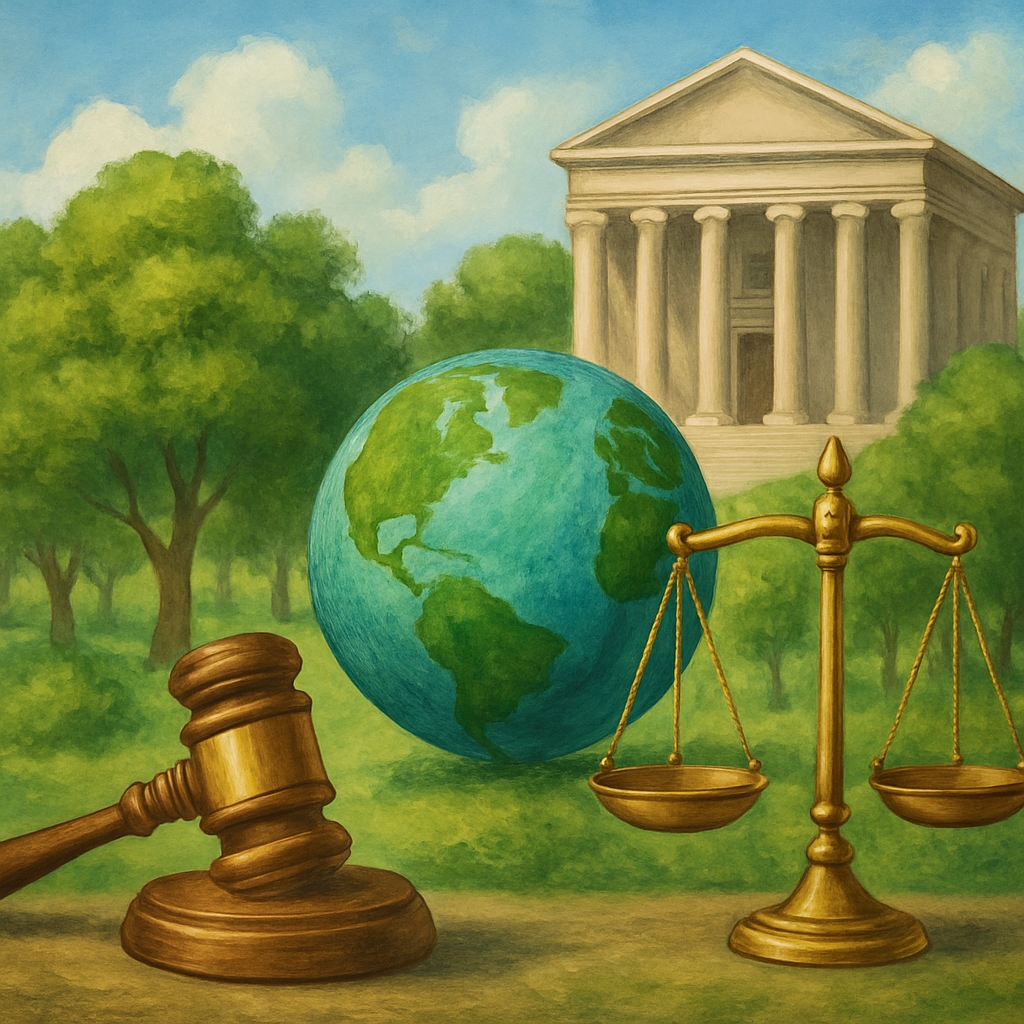Published on: 22nd October 2025
Authored by: Vanshika Vaishalik
Galgotias university
INTRODUCTION
Section 66A of the Information Technology Act of 2000 was ruled unlawful by the Indian Supreme Court. This ruling significantly limited the government’s power to suppress online communication at will and marked a turning point for freedom of speech and expression in the digital age.
FACTS OF THE CASE
By amending the Information Technology Act of 2000[1]in 2008, Section 66A was included with the goal of preventing cybercrimes and controlling digital communication. According to the provision, nothing that was egregiously offensive, menacing, or known to be false but intended to cause irritation, discomfort, danger, obstruction, insult, harm, criminal intimidation, enmity, hatred, or malice could be transmitted via a communication device or computer resource. Violations carried a fine and a maximum sentence of three years in prison. However, the phrasing of Section 66A was very problematic. The terms it employed, such as grossly offensive and annoyance, lacked precise legal meanings or standards and were subjective and vague. This gave government officials and police personnel a large level of latitude, which allowed for arbitrary interpretation and misuse of the law.
The Catalyst Incident: The Arrest of Two Women in Maharashtra (2012) The subject gained widespread attention with the death of Bal Thackeray, the well-known founder of the Shiv Sena political party, in November 2012. In Mumbai and other Maharashtra cities, there was an unscheduled shutdown after his death, with businesses, public transit, and services effectively stopping operations not because of a formal government order, but reportedly out of fear and respect for political opinion. In this regard, Shaheen Dhada, a 21-year-old resident of Palghar, Maharashtra, wrote on Facebook, questioning why the death of a political figure would cause the entire city to close. She expressed her ideas calmly and without using offensive or inflammatory language. Rinu Srinivasan, her buddy, merely liked the post. The Palghar police detained both women in accordance with Section 66A of the IT Act, even though the post was harmless. According to reports, local Shiv Sena members who were incensed by the story lodged a complaint, which led to the arrests.. After being held for a few hours, the women were freed on bond[2].
The arrest of the two women infuriated the public. Citizens, activists, journalists, and legal experts across the country condemned the arrests as a blatant misuse of power and a breach of the freedom of speech and expression protected by Article 19(1)(a) of the Indian Constitution.
A national conversation about the abuse of legal measures to suppress dissent and criticism, particularly on social media and online platforms, was sparked by the occurrence. It emphasized the risks of upholding antiquated or ill-drafted legislation in a democracy and the potential for such regulations to stifle free speech.
In the midst of this escalating turmoil, young law student and future advocate Shreya Singhal filed a Public Interest Litigation (PIL) before the Supreme Court of India in accordance with Article 32 of the Constitution, which permits people to petition the highest court directly for the protection of their fundamental rights.
Shreya Singhal challenged the validity of Section 66A in her appeal, arguing that it infringed upon the freedom of speech and expression protected by Article 19(1)(a) [3].Article 19(2)’s reasonable restrictions, which only allow limitations in certain, strictly defined circumstances (like public order, defamation, or national security) did not save it. Section 66A’s vague wording and subjective wording gave authorities the ability to arbitrarily target people, which resulted in power abuse, self-censorship, and a fear of speaking up online. Following Shreya Singhal’s PIL, several other individuals, civil rights organizations, and digital rights groups, including the People’s Union for Civil Liberties (PUCL) and the The Internet and Mobile Association of India (IAMAI) participated in the proceedings or submitted similar petitions. Other provisions were also challenged as unlawful, such as Section 79’s Intermediary Guidelines and Section 69A[4], which deals with website blocking. The Supreme Court gathered all of the petitions for review because they raised comparable constitutional concerns about digital rights in light of modern technology and communication, freedom of expression, legal clarity, and procedural fairness.
ISSUES
1. Does the right to free speech and expression clash with Section 66A of Article 19(1)(a) of the IT Act, 2000?
2. Does it fall under the reasonable constraints of Article 19(2)?
3. Are the rules and provisions of Section 69A constitutional?
ARGUMENTS BY THE PETITIONERS
One of the primary arguments was that the clause was unclear and overbroad. Without definitions for terms like grossly offensive, annoyance, inconvenience, danger, obstruction, insult, hatred, and ill-will, law enforcement officers were free to apply and interpret the law as they thought fit. The petitioners argued that this ambiguity violated Article 14 of the Constitution, which guarantees equality before the law and protects against arbitrary State action.
Another significant issue brought up by the petitioners was the chilling effect of Section 66A on free speech. The section’s ambiguous and subjective language deterred people from sharing their thoughts online because they were worried that even mildly critical or humorous remarks would be seen as offensive and result in criminal proceedings. This self-censorship stemming from fear and uncertainty undermined the very basis of Article 19(1)(a), which safeguards the right to freedom of speech and expression.
Lastly, the petitioners highlighted how Section 66A lacked procedural safeguards in its application, making it open to misuse and manipulation. There were no strict guidelines or requirements for prior review or approval before starting prosecutions under the provision. Without any sort of judicial scrutiny, this allowed the police to make politically motivated or arbitrary arrests.The petitioners referenced several real-life incidents where individuals had been detained for merely sharing satirical content, expressing political views, or liking a social media post.
ARGUMENTS BY THE UNION GOVERNMENT
The Union Government maintained the law’s validity by claiming that Section 66A of the Information Technology Act, 2000[5] was a necessary step to address the unique challenges posed by digital communication. The government said that because of its instantaneous nature and wide reach, the internet may cause major disruptions to public order, spread misleading information, and incite violence or unrest more swiftly than traditional media. Thus, it contended that some reasonable restrictions on internet speech were required to maintain social harmony and national security. Additionally, it was maintained that Section 66A was fully within the parameters of Article 19(2) of the Constitution, which allows restrictions on free communication for a variety of reasons, such as public order, defamation, and encouragement to crime, among other specific grounds.
The government said that Section 66A was not intended to punish basic criticism or dissent but rather to address exceptional circumstances involving severely offensive or harmful communication. It emphasized that only the most serious and heinous offenses were being tried and that the division served as a deterrent against cyber bullying, internet harassment, and the spread of false information. The Union also contended that because of the possibility of law enforcement abuse, a provision shouldn’t be entirely repealed. The presumption of constitutionality and the notion that a legislation is not unlawful just because certain authorities abuse it were highlighted by the well-established case law that was cited.
JUDGEMENT
Following this point, the two-judge panel which included Justices Rohinton Fali Nariman and J. Chelameswar has acknowledged the unanimous ruling as a watershed in Indian constitutional law. Section 66A was held to violate Article 19(1)(a)[6] of the Constitution, which safeguards the basic right to freedom of speech and expression. It pointed out that the section imposed vague and arbitrary restrictions on online expression by making it illegal to transmit any information that was grossly offensive or that caused annoyance, inconvenience, danger, or insult through computers or communication devices. The judges emphasized that by failing to differentiate between incitement and straightforward advocacy or discussion, the section criminalized free communication.
The Court categorically ruled that Section 66A could not be rescued under Article 19(2), which permits the State to impose reasonable restrictions on the right to free speech in the interests of sovereignty, security, public order, decency, morality, etc. Nevertheless, the disputed clause did not fall within any of these categories. Terminologies such as annoyance and inconvenience were excessively capricious and did not directly relate to any of the grounds permitted by Article 19(2). As a result, it was determined that the restriction was not only unreasonable but also disproportionate to the intended outcome.
The ruling’s emphasis on the concepts of ambiguity and over breadth was one of its primary features. The Court noted that because Section 66A[7] gave law enforcement officers too much latitude and lacked clear definitions, it was unconstitutionally ambiguous. The rule of law would be broken as people couldn’t tell with certainty if their comments would result in legal action. Furthermore, the section’s overreach, which made both harmful and harmless speech unlawful, suppressed free expression. It was decided that this overreach was excessive and incompatible with a society that values criticism and free speech.
Nonetheless, the Court upheld the legality of Section 69A of the IT Act and the Information Technology (Procedure and Safeguards for Blocking for Access of Information by Public) Rules, 2009[8]. Section 69A grants the government the power to limit public access to any information on the internet for purposes of public order, sovereignty, or other similar concerns, as stated in Article 19(2). The Court concluded that the Blocking Rules and Section 69A were suitably written and contained adequate procedural protections, such as committee review, blocking justifications, and a hearing opportunity.
The Court underlined that the blocking authority must be utilized appropriately and in accordance with procedural safeguards to prevent abuse. Therefore, the ruling showed a clear judicial stance in support of free speech in the digital age while weighing the state’s interests through specific legislative procedures.
SIGNIFICANCE AND IMPACT
By declaring Section 66A of the Information Technology Act unconstitutional, the Supreme Court strongly reinforced the importance of Article 19(1)(a)[9] in a significant victory for civil liberties in the digital age. The ruling emphasized that vague and arbitrary speech restrictions, particularly those imposed online, cannot be tolerated in a democracy where the rule of law is respected.
The Court played a crucial role in protecting individual liberty from governmental abuse the decision also highlighted the importance of judicial activism grounded in constitutional morality. By stressing that any speech restriction must be particular specifically intended, and justified under Article 19(2) it set a bar for future legislation. Globally legal professionals and digital rights organizations have hailed the case as an illustration of a ruling that balances sensible legislation with the right to free speech. The decision strengthened India’s legal basis for online expression and significantly enhanced the global discussion on internet freedom.
CONCLUSION
The Shreya Singhal v. Union of India decision marked a significant turning point in the evolution of Indian free speech legislation, especially with reference to digital communication. The Supreme Court ruled that Section 66A[10] of the IT Act was unconstitutional, upholding the fundamental principles of proportionality, fairness, and clarity in law in addition to safeguarding the fundamental right to freedom of speech and expression under Article 19(1)(a). The decision made a clear line between reasonable restrictions and arbitrary censorship, emphasizing that regulations shouldn’t be so vague or broad as to restrict free speech and give law enforcement agencies unbridled power.
The decision also served as a reminder that constitutional rights must adapt to contemporary problems, like those posed by the internet. The Court ensured that these authorities would still be held accountable and subject to due process, even if it retained the power to prohibit websites under Section 69A. Ultimately, the ruling has had a significant impact, altering legal theory around internet control and igniting similar reforms globally. It maintained the judiciary’s obligation to defend fundamental rights and remains a paradigm for the ongoing struggle to reconcile free speech and responsible governance in the age of technology.
[1]Information Technology Act 2000, ss 66A, 69A.
[2] Shreya Singhal v. Union of India https://lawbhoomi.com/shreya-singhal-v-union-of-india/
[3] Constitution of India 1950, art 19(1)(a), art 19(2), art 32.
[4] Information Technology Act 2000, sec- 66A, 69A.
[5] Information Technology Act 2000, sec-66A, sec- 69A.
[6] Constitution of India 1950, art 19(1)(a), art 19(2)
[7] Information Technology Act 2000, sec-66A, sec-69A.
[8] Information Technology (Procedure and Safeguards for Blocking for Access of Information by Public) Rules 2009.
[9] Constitution of India 1950, art 19(1)(a), art 19(2)
[10] Information Technology Act 2000, sec- 66A,sec- 69A.




